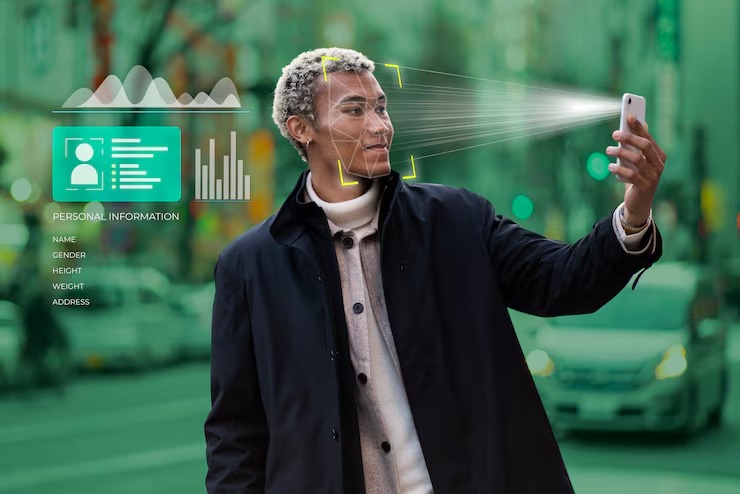AI-Driven Outdoor Advertising: Real-Time Audience Targeting

The evolution of advertising is closely tied to technology—and artificial intelligence (AI) is leading the next wave. While AI has already reshaped digital marketing through automation and personalization, its influence is now revolutionizing outdoor advertising too. The fusion of AI with out-of-home (OOH) media has unlocked a new frontier: real-time audience targeting in physical spaces.
Gone are the days of static billboards that broadcast one-size-fits-all messages. Today, AI enables outdoor ads to adapt to who’s watching, when they’re watching, and even how they’re likely to respond. This isn't just innovation for the sake of it—it’s a smarter, more efficient way to engage, influence, and convert.
What is AI-Driven OOH Advertising?
AI-driven outdoor advertising involves the use of machine learning algorithms, computer vision, sensor data, and predictive analytics to deliver personalized or contextualized messages on OOH screens. These intelligent systems can analyze real-time inputs such as:
- Audience demographics (age, gender)
- Foot traffic volume
- Facial expressions (for mood detection)
- Time of day and day of the week
- Weather and environmental conditions
- Nearby event activity or location data
Based on this analysis, AI can select and serve the most relevant ad creative instantly—making outdoor advertising as dynamic and responsive as digital.
How Real-Time Audience Targeting Works
Data Collection
Cameras, sensors, mobile device signals, and IoT systems gather anonymized data about passersby—such as movement, dwell time, group size, and inferred demographics.
AI Analysis
AI algorithms process this data to identify patterns, recognize audience clusters, and predict optimal ad delivery. For example, if more females aged 18–24 are detected in a location during evening hours, fashion and beauty ads may be prioritized.
Content Optimization
The billboard dynamically changes the displayed ad to match the current audience profile. This can happen in milliseconds, enabling hyper-targeted outdoor campaigns in real-world environments.
Performance Feedback Loop
AI models continuously learn from performance metrics—such as engagement levels or post-ad conversions—to refine targeting and improve campaign effectiveness over time.
Benefits of AI in Outdoor Advertising
1. Higher Relevance = Higher Engagement
AI ensures that every impression counts by matching the content with the most likely audience in that moment. Relevant ads naturally attract more attention, improving recall, interaction, and overall brand impact.
2. Efficient Budget Utilization
Real-time targeting helps eliminate waste by avoiding irrelevant displays. This level of efficiency means advertisers get more reach and response per rupee, improving ROI significantly.
3. Dynamic Campaign Flexibility
AI enables brands to adjust creative messaging on the fly based on ongoing campaign data. You can A/B test creatives in real-world conditions and refine messages instantly—something traditional OOH could never achieve.
4. Deeper Insights and Reporting
With AI-driven analytics, brands can access detailed insights into:
- Viewer demographics and dwell times
- Optimal time slots for different audience segments
- Content effectiveness by location or context
This data empowers smarter decision-making for future campaigns.
Real-World Applications and Examples
Automotive
A car brand uses AI to detect approaching vehicles and tailors ads based on car type or estimated value—displaying luxury features for high-end models or fuel efficiency messaging for budget-conscious drivers.
QSR (Quick-Service Restaurants)
Fast-food brands adjust menu promotions in real-time based on crowd behavior, time of day, and weather—advertising hot beverages in the rain or late-night combos near college campuses.
Retail & Fashion
AI-driven displays in shopping districts detect shopper demographics and show relevant fashion collections or sales, increasing the chances of immediate store visits.
Healthcare
Hospitals and wellness brands display different messages based on age groups, promoting vaccinations for elders or mental health awareness for young adults.
Ethical Considerations and Privacy
While AI-powered targeting is powerful, it must be balanced with responsible data practices. Privacy regulations such as the GDPR in Europe and India’s Digital Personal Data Protection Act require advertisers to:
- Use only anonymized data
- Avoid facial recognition unless explicitly consented
- Clearly inform users where data is being captured
- Ensure transparency in data handling
At Brand Republic, we advocate for ethical AI usage, focusing on aggregate behavioral trends—not intrusive surveillance—to drive engagement while preserving public trust.
The Role of AI in the Future of OOH
As AI becomes more sophisticated, the possibilities for outdoor advertising are endless:
- Emotion AI could tailor content based on viewer expressions (e.g., showing humor to a smiling audience).
- Voice-activated billboards could interact with passersby for product demos or information.
- AI + AR integration could allow users to engage with a billboard via smartphones, turning passive viewing into immersive storytelling.
We’re entering a world where outdoor screens don’t just display ads—they think, adapt, and perform.
Conclusion
The fusion of AI with OOH is not a trend—it’s a tectonic shift. It brings digital-level targeting to the physical world, enabling brands to have intelligent conversations with audiences on the move.
At Brand Republic, we help brands harness AI to create OOH campaigns that are not just seen, but felt, remembered, and acted upon. Whether you're launching a new product, targeting commuters, or driving footfall to retail, real-time audience targeting with AI turns every screen into a strategic asset.
Ready to transform your outdoor media into a smart performer? Let’s build the future—one intelligent impression at a time.
